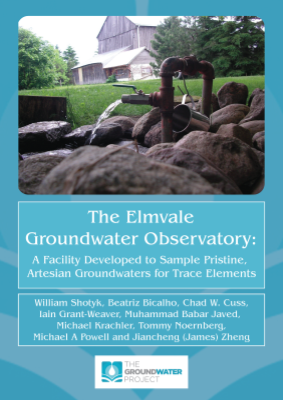Even in the most pristine groundwater, all naturally occurring trace elements are found in varying concentrations. Some of these elements are essential for human health (e.g., molybdenum), others are benign (e.g., strontium), and still others are potentially toxic (e.g., lead). Added to these naturally occurring trace elements are those introduced anthropogenically.
To quantify and understand the impacts of various human activities on groundwater quality, it is vital to establish reliable background concentrations of trace elements for comparison. In this book, we describe work conducted at the Elmvale Groundwater Observatory, a dedicated research facility for sampling pristine, flowing, artesian groundwater while minimizing the risk of sample contamination. We summarize the experience we have gained to date regarding selection of well construction materials, the design and use of laminar-flow, clean-air cabinets, and the importance of appropriate plastic sampling bottles and cleaning procedures—measures intended to minimize trace elements in blank samples (i.e., samples containing distilled water). The book includes a summary of trace element concentrations in pristine groundwater that will be useful for other studies. In addition to providing context and perspective, values in the summary also function as reference levels to allow comparison to pristine groundwater concentrations.

